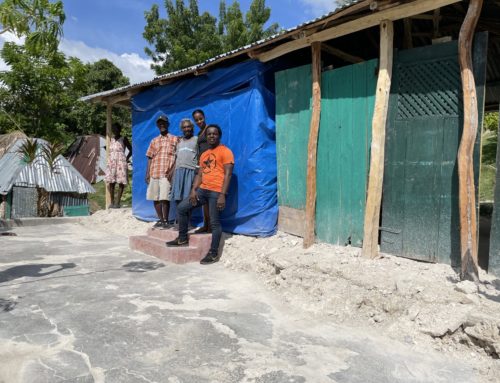Transportation in Haiti is certainly varied, with much of the population depending on a combination of ways to get around the island. Whether they’re living in the country or in the city, few Haitians own or have access to a personal vehicle, nor do they have access to more common forms of public transportation like city buses, trains, or subways. Instead, most Haitians rely on walking, biking, or hitching a ride on a ‘tap tap.’ A tap tap is essentially a Haitian version of an American taxi cab, with some buses even operating as tap taps.
The sides of these buses are brightly painted, decorated with vibrant local artwork and the occasional graffiti from street artists. The name ‘tap tap’ is derived from the passengers’ habit of using their coins to tap on the side of the vehicle, alerting the driver that they need to be let off. Each tap tap can hold between 20 to 30 people, and they are typically quite full as this is the preferred method of transport for so many Haitians!
Another popular style of tap tap is actually a pickup truck, with benches installed inside and a canopy thrown over the top. Just like their bus counterparts, these tap tap trucks are almost always at (or over) their given capacity. In certain instances, a motorcycle may also function as a tap tap, piling on as many people or as much cargo as it can hold. While the fee for riding a motorcycle is a bit higher, there’s a possibility for this to be a faster way to get around.
In addition to motorcycles, donkeys are sometimes used as a means to transport goods to market or up a mountainside to a neighboring village. Using livestock to help haul various types of cargo is common in many countries around the world, and Haiti is no exception. Haitians have long-recognized the valuable asset donkeys, mules, burros, and similar animals can be in transporting supplies to different parts of the island, so they use these resources whenever possible.
With regards to water transport, Haiti has one of the oldest maritime histories in the Americas. The port at Port-au-Prince (Port International de Port-au-Prince) has more registered shipping than any other Haitian port, though the port at Saint-Marc is now the preferred port of entry for any and all consumer goods coming in and out of the island.
Transportation by air is mainly coordinated through the airport located in Port-au-Prince, though there a few other active Haitian airports. The Toussaint Louverture International Airport (formerly known as Port-au-Prince International Airport) is Haiti’s only jet way, and as such, handles the vast majority of its international flights. Air Haiti, Tropical Airways, and a handful of major airlines from Europe, the Caribbean, and the Americas are currently serving Toussaint Louverture.
Haitians are a busy people, with many day-to-day responsibilities in both their professional and personal lives. Luckily, they have a number of methods of transportation to choose from to help them get all of this accomplished. If you ever find yourself visiting Haiti, be sure to try out a tap tap and live like the locals do!










